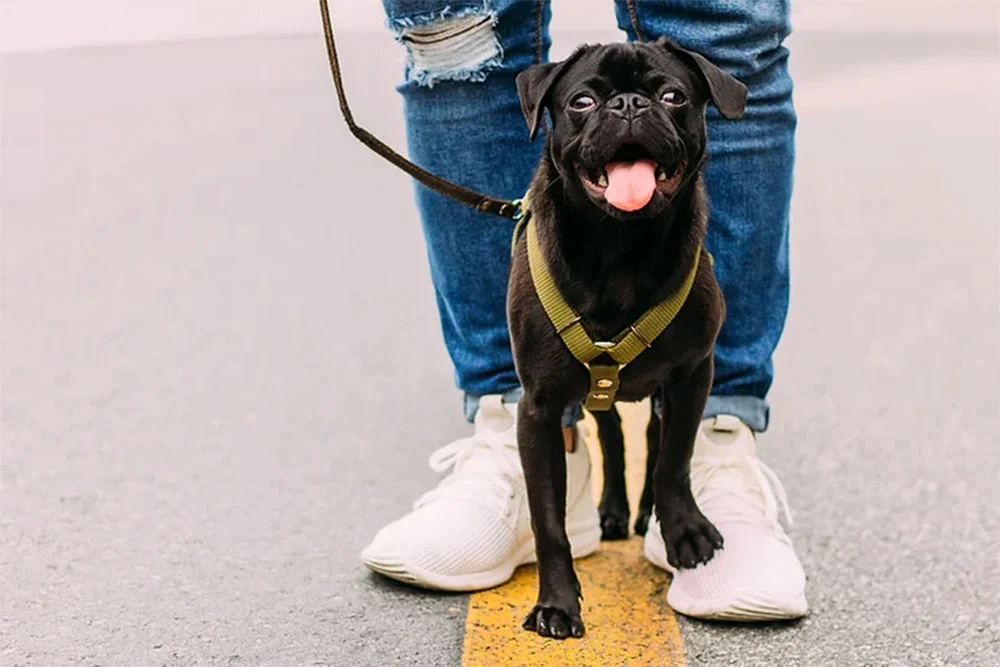DOG TALK: THE BLOG!
What We Say When We Talk With Dogs
And what it tells us about an ancient relationship.
“What is it about dogs that makes intelligent men, gifted women — great minds — look at them and say [in baby-talk voice], ‘Who’s a good boy? . . . Wooj a whajeejeeb?’”
– Stephen Colbert
In her fascinating book, Our Dogs, Ourselves: The Story of a Singular Bond, Alexandra Horowitz, one of the world’s leading dog cognition scientists, begins a chapter about how people talk to their dogs with this quote from Stephen Colbert. Her aim in the chapter is to document the things people say to their dogs to shed some much-needed light on this little-explored area of cross-species communication.
It’s so natural to talk to dogs that for me I wasn’t even aware when I did it. But now I have evidence that I — that we all — talk to our dogs.
Everywhere we go we encounter dogs: on the sidewalk, in the parks, in stores and airports, at readings, and of course at Kingwood Pet Resort. Most of the dogs are with people. Consequently, it is not long before I hear people talking to their dogs. Sure, much of what we say to dogs is request or command, exclamation points implied: Sit; Come; Go Get Your Ball. Once we begin really listening, you’ll be surprised at how much is not mere directive.
The more I know the more I hear.
“You’re so cute and so smart. And worth money! I could marry you.”
(Woman to her Goldendoodle)

Once I began listening for other owners’ dog-directed soliloquies, I found that they were commonplace. I might catch two or three conversational snippets on a long walk. It seems as though the act of a person walking by sometimes prompted an owner’s conversational opening to her dog — as though to emphasize how not-walking-slowly-down-the-sidewalk-alone she is. Not at all alone: She is with someone.
“What are you even doing? I don’t understand you.”
(Woman to her very sniffy black-and-white dog)
As every “Hi, puppy!” directed dogward demonstrates, the way we talk to dogs overlaps with the way we talk to babies. A Harris poll found that 95 percent of us consider dogs our family — so are we simply talking to them as if they were our children? “Pet-directed speech” certainly shares many features with baby talk: We raise the pitch of our voice and make it singsongy. We use a fairly limited vocabulary with infants, and with dogs too: more “You’ve been bad” than “What you did was morally indefensible.” Language is telegraphed: We tend to repeat words, slow our speech, shorten phrases and drop some categories of words.
On the other hand, when speaking to infants, we hyperarticulate our vowels: exaggeratedly saying Look at the doggeeeeee! to babies — but not nearly as much to dogs. It’s a subtle but key difference that marks a rift in our ways of thinking about kids and pups. Hyperarticulation is didactic, a way of teaching a growing human our language. When we are talking to dogs, we are under no illusion that they will grow up to use the language themselves.
In the spirit of conversation that doesn’t need an answer, we turn question marks toward our pups, engaging them as if they might respond — and then waiting a beat to give them due time to so reply. Behind every unanswered question is the feeling that we might know the answer, given that we and our dogs live together, see each other naked, and obviously know everything about each other. Hence the reliable appearance of the We’ve Discussed This utterances (dog’s full family name implied)…

Most of the animal speak I overhear, is seemingly not intended for my ears. But when we talk to dogs around others, it serves as a social lubricant, a way to open up the possibility of talking to each other. “What’s your name?” said dog-ward is never answered — except, obligingly, by a dog’s owner. Dogs are not only reflections of us, they are social intermediaries for us. Any hesitation I may have about a person approaching me on the street is deflected by my dog Nyx’s smiling, wag-filled greeting of them; in response, they talk not to me, but to the dog. Dogs are, of course, the preoccupation of our minds: we hope for them, care for them, love them. We narrate our thoughts while we watch them, and their thoughts while they accompany us.
One of the things we say to our dogs daily — two-thirds of us, according to one survey of North American pet owners — is I love you. Even the simple sound of our voice is an expression of that love, regardless of the content of the words we say. Through talking to them, we let them into an intimacy with us. They hear our secrets, our private thoughts.
So now you know: Pass me on the sidewalk, and I may be listening. Please don’t let it stop you from talking. It makes me feel optimistic about humans to hear us talk to other animals. We are at our best in those moments when we extend the circle we’ve drawn around ourselves to include them.



